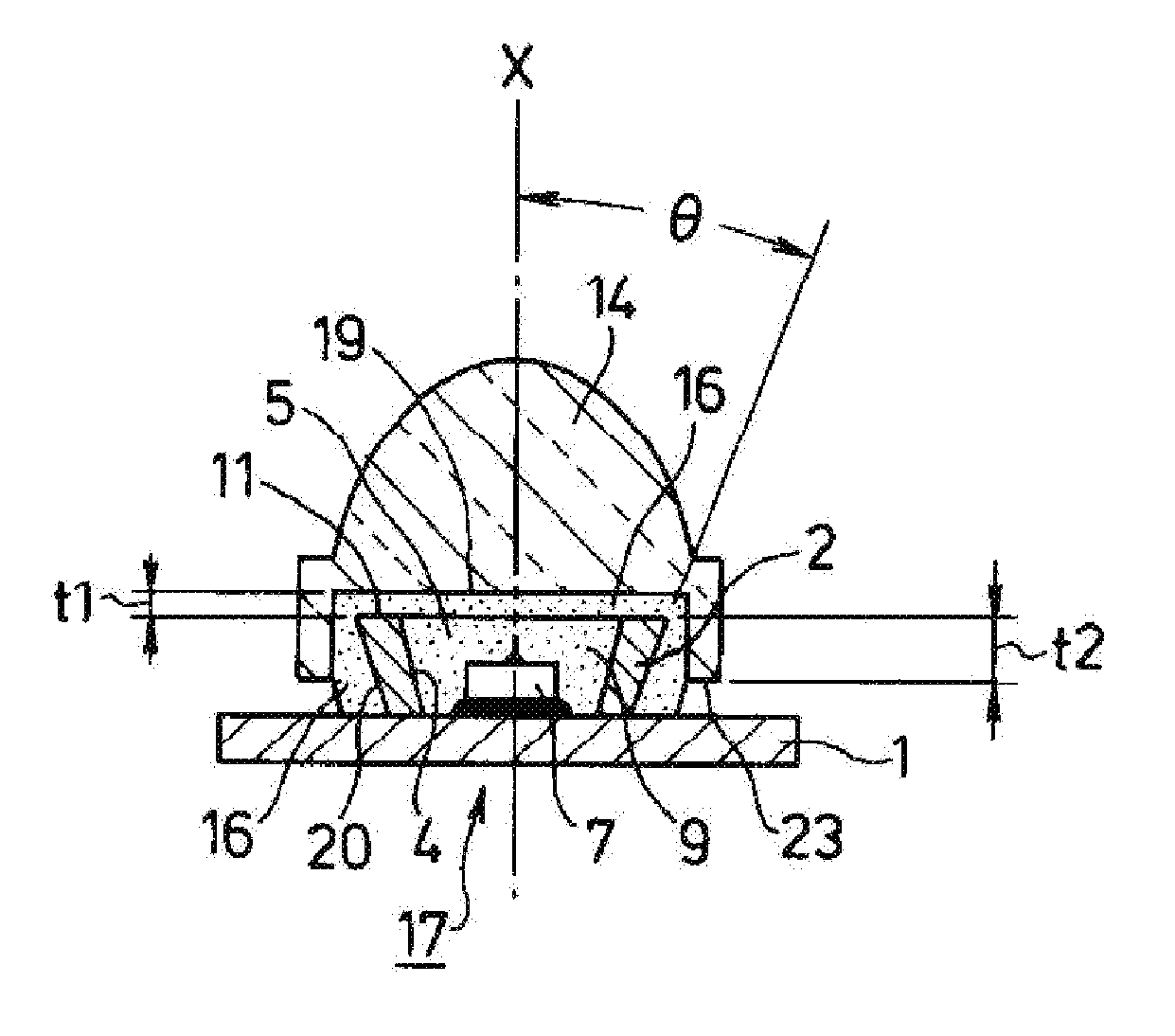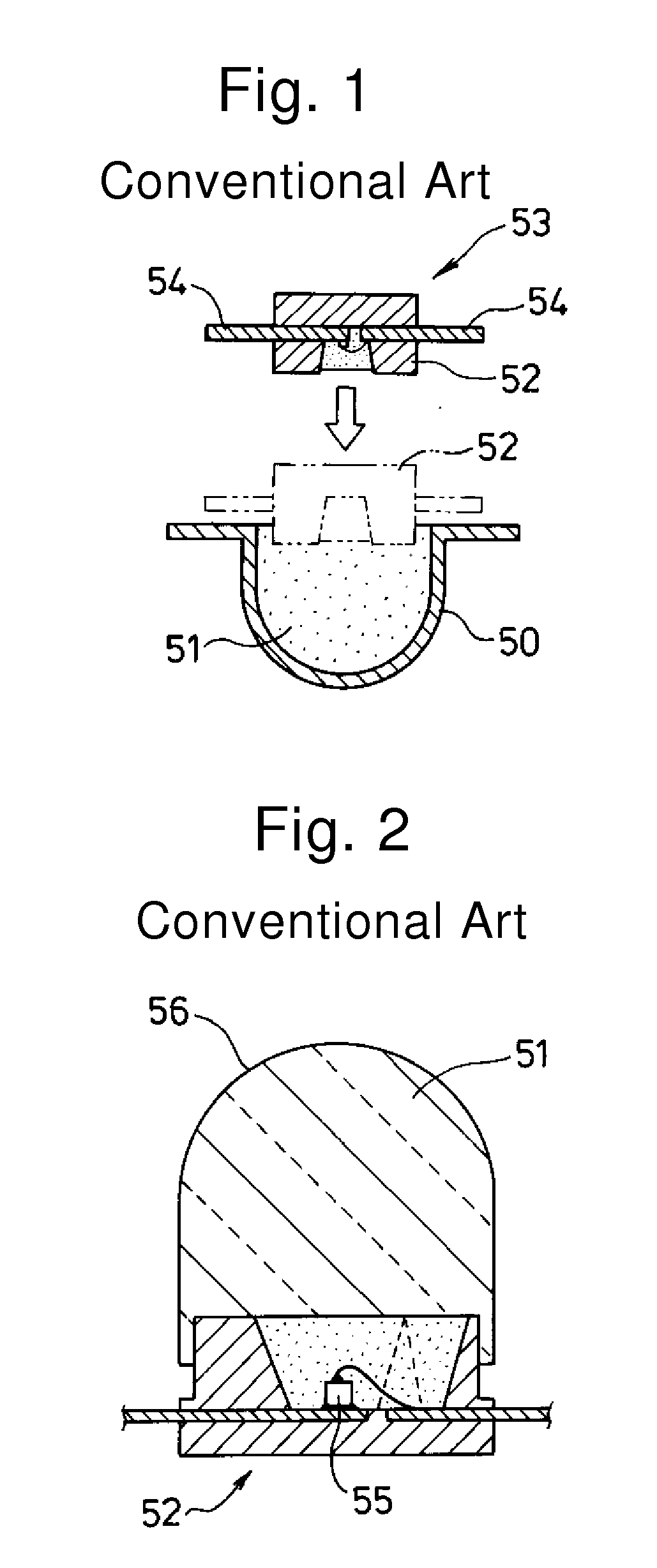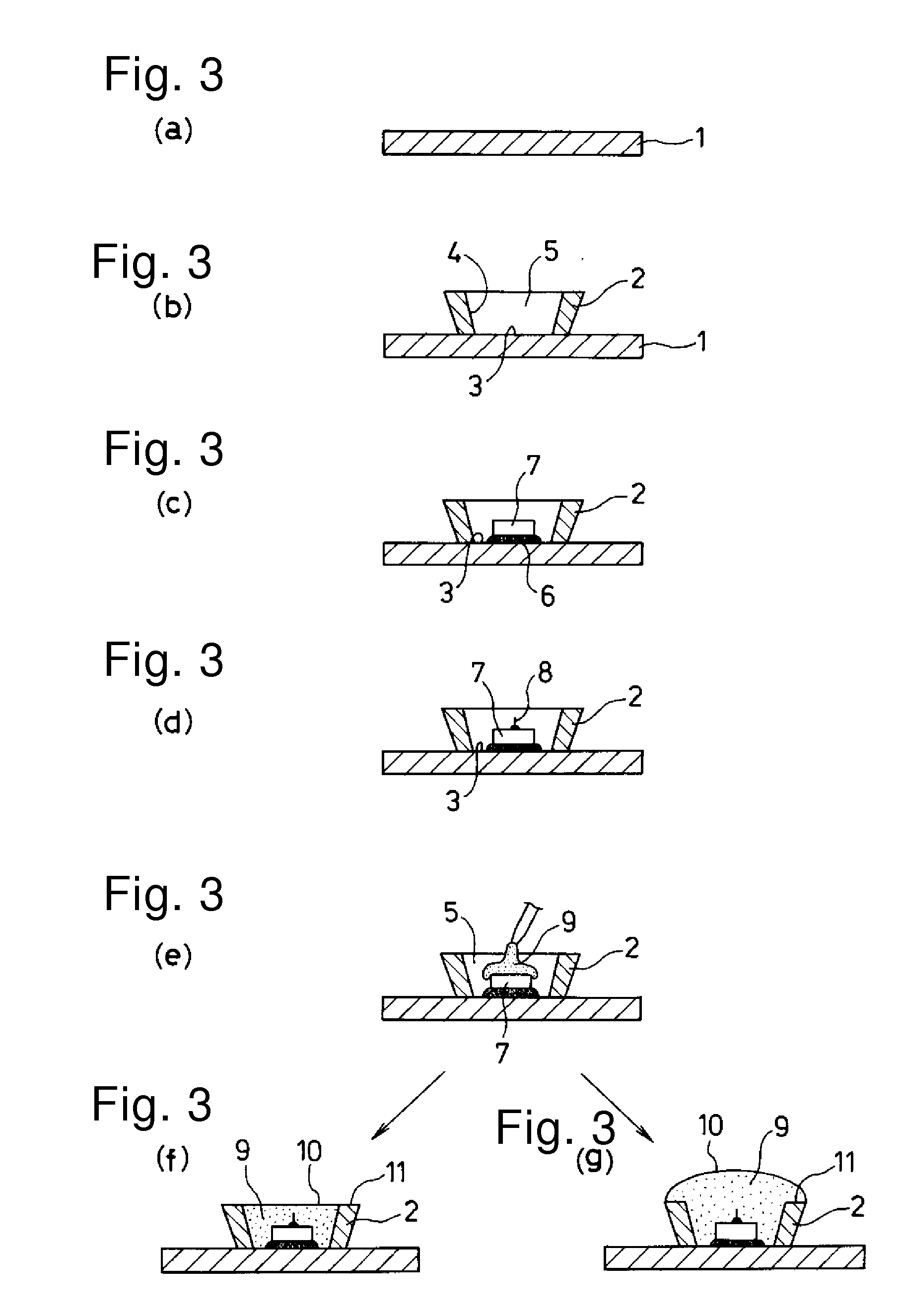Semiconductor light-emitting device
a technology of semiconductors and light-emitting devices, which is applied in the direction of semiconductor devices, basic electric elements, electrical appliances, etc., can solve the problems of inability to achieve the same light gathering efficiency, the size and height of the surface mount light-emitting devices is subject to the constraint that the size and height of the device should be small, and the inability to secure the lens diameter and the adequate distance between the led chip and the lens, as provided in the cannon-ball type led
- Summary
- Abstract
- Description
- Claims
- Application Information
AI Technical Summary
Benefits of technology
Problems solved by technology
Method used
Image
Examples
Embodiment Construction
[0057] Exemplary embodiments of the presently disclosed subject matter will be described in detail with reference to FIGS. 3 to 12. The exemplary embodiments described hereinafter are specific examples of the disclosed subject matter, and thus various technical features and characteristics are added thereto. However, the scope of the present invention of the disclosed subject matter is not limited to the exemplary embodiments.
[0058] A semiconductor light-emitting device made in accordance with principles of the disclosed subject matter can be configured to include a semiconductor light-emitting element-mounted body, an optical lens, and a transparent soft resin spacer.
[0059] The semiconductor light-emitting element-mounted body is one of the components of the semiconductor light-emitting device, and first the manufacturing steps thereof are described with reference to FIGS. 3(a)-(g).
[0060] In FIG. 3(a) a circuit substrate 1 on which electrode wiring has been preformed can be prov...
PUM
 Login to View More
Login to View More Abstract
Description
Claims
Application Information
 Login to View More
Login to View More - R&D
- Intellectual Property
- Life Sciences
- Materials
- Tech Scout
- Unparalleled Data Quality
- Higher Quality Content
- 60% Fewer Hallucinations
Browse by: Latest US Patents, China's latest patents, Technical Efficacy Thesaurus, Application Domain, Technology Topic, Popular Technical Reports.
© 2025 PatSnap. All rights reserved.Legal|Privacy policy|Modern Slavery Act Transparency Statement|Sitemap|About US| Contact US: help@patsnap.com



